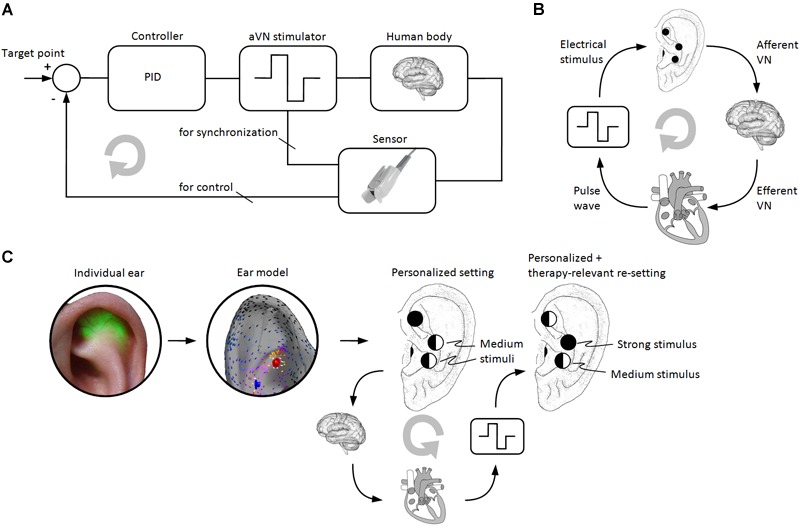FIGURE 5.

Personalized aVNS. (A) The closed-loop aVNS with the physiological biofeedback (e.g., magnitude of the pulse wave or HRV) which is used to control stimulation parameters of aVNS (e.g., the stimulus strength) in order to adhere to momentary therapeutic needs (e.g., optimal blood perfusion in legs). The biofeedback can also be used for a temporal synchronization of the applied stimuli with inner body rhythms (e.g., respiratory or cardiac cycle) to interfere constructively with the dynamics of the body. (B) aVNS of the afferent VN modulates activity of the efferent VN outflow to the heart, whereas the peripheral pulse wave arriving from the heart can be used as biofeedback to the stimulator of aVNS. (C) Personalized and optimized setting of stimulation needles and their stimulation patterns for the percutaneous aVNS based on an individualized ear model (Figure 4B) as derived from the transilluminated individual ear (Figure 2D). Therapy-relevant re-optimization of the stimulation patterns results when the closed-loop aVNS from the panels (A,B) operates. Here the level of the circle’s filling at each electrode position indicates the local stimulation strength which changes in the course of the closed-loop control.
